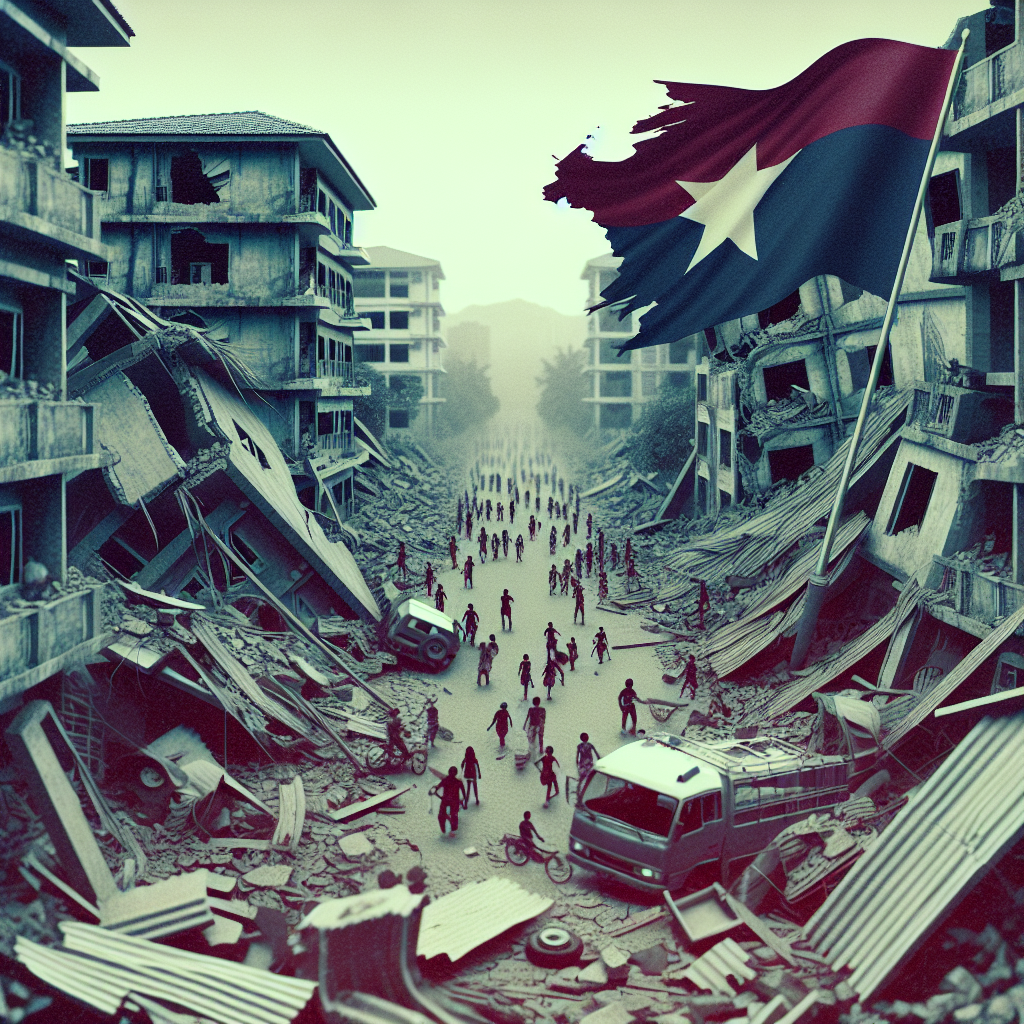Myanmar Earthquake 2025: A Nation in Crisis and the Global Call for Action
The Unforgiving Forces of Nature
On March 28, 2025, Myanmar was rocked by a catastrophic earthquake measuring 7.7 on the Richter scale. In mere moments, lives were irrevocably changed, homes reduced to rubble, and a nation plunged into chaos. This powerful quake, one of the deadliest in recent years, not only claimed more than 140 lives but also sent shockwaves through neighboring countries like Thailand, where even the bustling city of Bangkok felt its impact.
Natural disasters underline both humanity's vulnerability and resilience. The Myanmar earthquake is a somber reminder of how quickly life can shift, leaving destruction and fragile hope in its wake. As the country grapples with the aftermath, global solidarity and immediate action are essential in aiding its recovery.
A Closer Look at the Tragedy
1. The Scale of Destruction
The earthquake struck Myanmar with severe intensity, its epicenter located near densely populated regions. Within seconds, entire villages were flattened, infrastructure was torn apart, and access to basic necessities like water and shelter became a challenge. The devastation was compounded by aftershocks, leaving survivors in a constant state of fear and uncertainty.
In nearby Thailand, the tremors rattled buildings and left many questioning how prepared urban centers like Bangkok are for seismic events. These effects underscore the far-reaching consequences of natural disasters, revealing the interconnected vulnerabilities of the surrounding nations.
2. Humanitarian Crisis Unfolds
The aftermath of the earthquake has led to a significant humanitarian crisis. Emergency services in Myanmar are overwhelmed, attempting to locate survivors under collapsed structures while providing medical care to the injured. International aid has begun to pour in, but the logistics of reaching remote areas pose a significant challenge.
Every story emerging from this tragedy paints a picture of heartbreak but also resilience. Families search tirelessly for missing loved ones, volunteers risk their lives to rescue neighbors, and local communities come together in extraordinary ways to support each other.
Access to clean water, food, and temporary shelter is especially critical. Relief organizations are working around the clock to distribute essential supplies, but the global community’s involvement remains pivotal.
Global Responses to the Crisis
3. International Aid and Support
Natural disasters often spark a sense of unity across borders, and the Myanmar earthquake is no exception. Humanitarian aid from countries like Japan, India, and the United States has arrived swiftly, carrying essential supplies, rescue teams, and medical assistance.
The United Nations has issued a call for immediate funding to support those affected, urging countries to prioritize Myanmar in their disaster-relief efforts. However, the scale of the disaster demands not just monetary support but also technical expertise, especially in rebuilding efforts and disaster preparedness planning.
4. Lessons for Neighboring Countries
Neighboring nations, particularly those in seismic zones, are using this disaster as a wake-up call. Preparedness plays a crucial role in minimizing the damage caused by earthquakes. Countries like Thailand are reassessing their urban resilience plans, focusing on ensuring that infrastructure can withstand future seismic events.
Experts warn that current measures may not be enough to prevent loss of life and economic consequences during a similar disaster. Perhaps the biggest lesson lies in collaboration: nations must work together not only in the aftermath but also in preparing for future crises.
Building Resilience Beyond the Rubble
The 2025 Myanmar earthquake underscores the unpredictable nature of disasters and the universal need for preparedness. Natural disasters will continue to occur, but how we respond determines the scale of impact. Rebuilding efforts in Myanmar must focus on long-term resilience, from designing earthquake-proof infrastructure to educating communities on safety measures.
The global community has a critical role to play, not simply as responders but also as collaborators in creating a safer, more sustainable world. For Myanmar, the road to recovery will be long and arduous, but it is also an opportunity to rebuild a more resilient nation.
Frequently Asked Questions (FAQ)
1. What caused the earthquake in Myanmar?
The earthquake was caused by tectonic plate movements along the boundary of the Indo-Australian Plate and the Eurasian Plate. This fault line is known for its seismic activity.
2. How can people help?
Individuals can support the relief efforts by donating to trusted organizations like the Red Cross or UNICEF, volunteering with local disaster-response initiatives, and spreading awareness about the crisis.
3. Is Southeast Asia prone to earthquakes?
Yes, Southeast Asia lies along the Pacific Ring of Fire, an area of high seismic activity. Countries like Indonesia, Myanmar, and the Philippines are particularly vulnerable.
4. What measures can prevent such destruction in the future?
Investing in earthquake-resistant construction, educating communities about disaster preparedness, and improving early warning systems can significantly reduce the impact of earthquakes.
Tags
#MyanmarEarthquake #NaturalDisasters #GlobalRelief #EarthquakePreparedness #HumanitarianAid #EmergencyResponse #DisasterResilience
Final Thoughts
In moments of crisis, stories of compassion, resilience, and solidarity shine brightest. While Myanmar mourns its loss and begins the long road to recovery, there is an opportunity for the global community to come together—not only to provide immediate aid but also to forge a future where such disasters have a lesser impact on human lives.
If you want to take part in helping Myanmar recover or want to learn more about disaster preparedness in vulnerable regions, now is the time to act. Your support, in any form, could make all the difference. 💙
